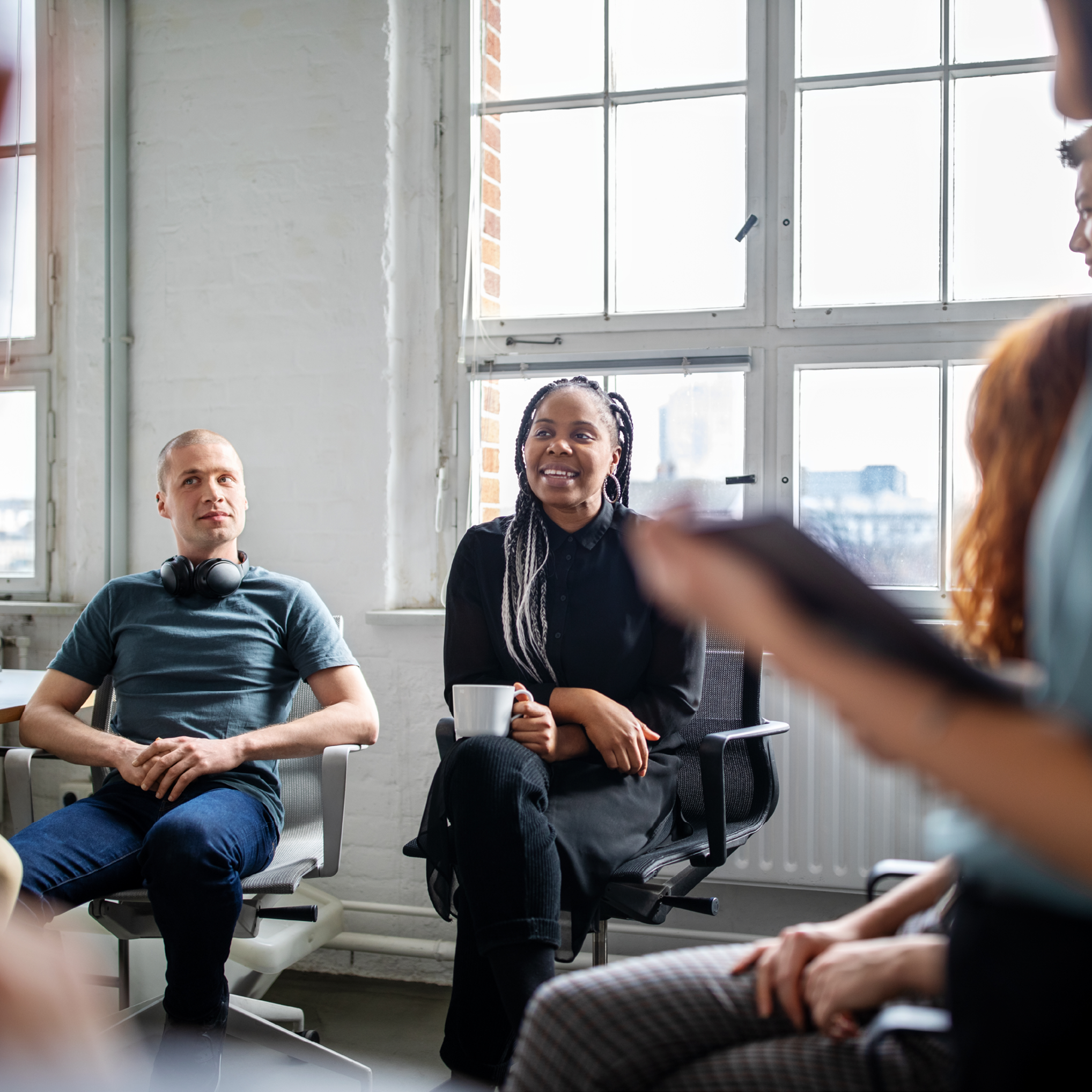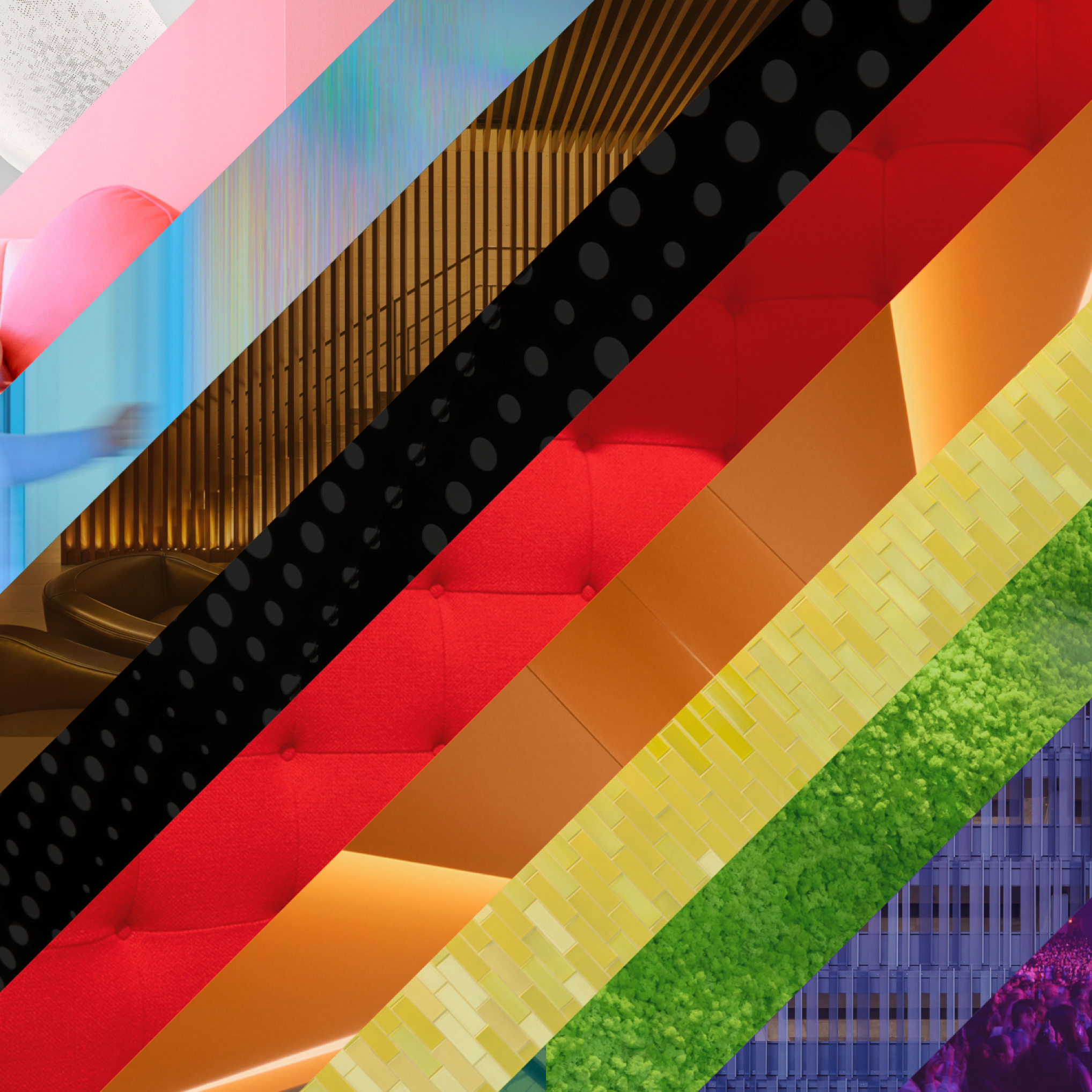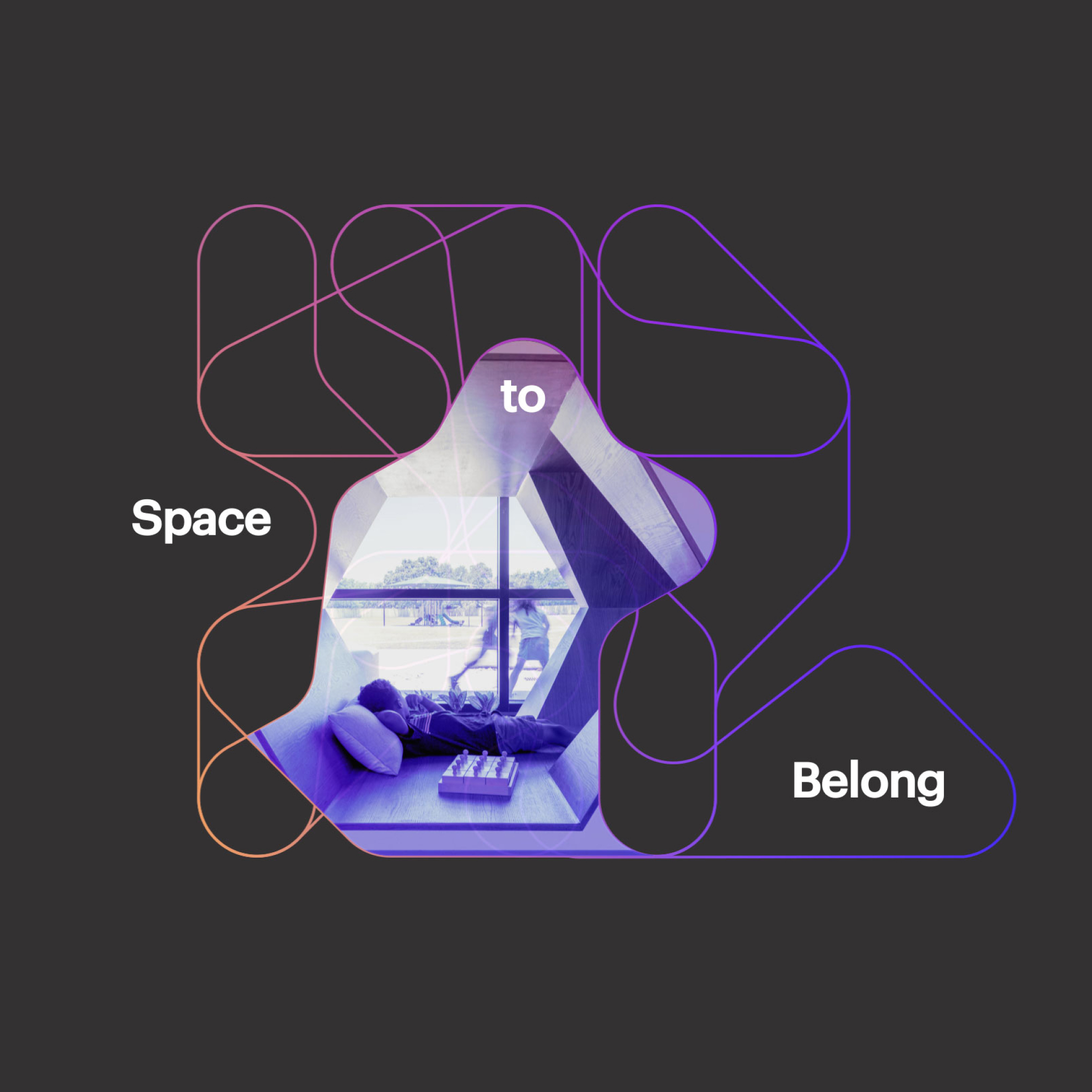
To Create Inclusive Spaces, LGBTQIA+ Designers Advocate for Themselves and Others
There isn’t a universal approach to designing for inclusion, no one size-fits-all definition for what an inclusive space looks like. Architects and interior designers often engage with individuals who will use the spaces they design — seeking to understand who they are and what they need — with the goal of creating supportive environments for people with diverse identities.
Many designers also rely on their own experiences to inform the work they do.
Reflecting on their lives and identities, LGBTQIA+ designers bring perspective that can lead to more welcoming, comfortable spaces for people with similar backgrounds and lived experiences as them, as well as a broader range of people who encounter the places they design.
A design professional and job captain working in HKS’ health practice in Washington, DC, My-Anh Nguyen (they/them), identifies as non-binary and transmasculine. They said that their queer identity, as well as their Asian American identity, helps them overcome barriers to inclusion during the design process and in the outcomes of the projects they work on.
“In design, we talk a lot about integration and how we can avoid silos. The idea of avoiding silos comes pretty naturally to me,” Nguyen said. “Being non-binary allows me to have mindset that is expansive and inclusive as a professional. I see my experience as a practice of nuance and consideration in how I incorporate different perspectives.”
Nguyen and several other LGBTQIA+ designers at HKS said their personal experiences shape how they collaborate with project team members including fellow designers, contractors and clients. Some said they have developed abilities to communicate across differences and empathize with others — often stemming from instances where they felt excluded while growing up or early in their careers — that they bring to their work.
“I go out of my way to try to not make people uncomfortable and that is related to my being out. I try to be in tune with people’s comfort levels and sensitivities and adapt. It’s ingrained in me,” said Scott Martin, a senior health project architect in the HKS Detroit office who identifies as a cisgender gay man. Martin also said that he downplays hierarchies as much as possible; he feels most comfortable on a project team where everyone is treated as equals.
Fostering Comfort and Safety Through Design
Whether or not people will feel welcome and comfortable in a space is a crucial consideration for architects and designers. But physical and psychological safety are not guaranteed for anyone in the built environment, no matter how well the spaces are designed. Marginalization or othering — including discrimination based on race, ethnicity, physical abilities, sexual orientation or gender expression — can occur in any space.
Although design alone can’t ensure physical and psychological safety, there are plenty of opportunities to advocate for people who will use a space and design to support them, according to multiple LGBTQIA+ designers at HKS.
“Design can give people — no matter how they self-identify — the ability to be comfortable showing up as they are,” said HKS’ Zac Rudd, who identifies as a cisgender gay man.
Rudd is a designer with the firm’s education practice, where he creates interior designs for schools and universities. While growing up, Rudd didn’t always feel like he could be his true self at school. Today, he draws on those memories to approach design challenges “with kindness and a sense of curiosity and care.”
Rudd said that because children are required to go to school, they don’t necessarily have autonomy to choose what spaces they can be in during elementary or high school. In higher education settings, challenges associated with access to transportation can limit students’ options to get around or leave campus. He strives to design places that provide students with some elements of autonomy and choice for where they can socialize, study, or retreat.
“One of the important things to do as a designer is to normalize all the elements of being a human that change from day to day,” Rudd said. “There is power in choice. Design can provide people with the ability to know that one choice is just as okay as another and if your choice changes the next day, you’re not more or less of a person.”
Just like educational environments, hospitals and clinics contain ample opportunities to design for the different needs of a diverse range of people, according to Martin, who primarily works on interior renovations in health care settings.
“If I am space planning, I think about my own experience. I don’t like spaces that are too restricted. I like there to be space where I can get out of the mix of things and be on the periphery,” he said. Martin said that his personal preferences, in addition to his perspective as a cancer survivor, have helped him to understand what patients and staff need from health care environments.
“In waiting areas, you may not want your back to the door or passageway and be able to see people coming and going,” Martin said, noting that it’s important for designers to think about how they can provide opportunities to reduce stress, especially in hospitals.
-

Announcement
HKS Launches HKS xBE to Cultivate Inclusion in Architecture & Design Industry
Read More
Showing Up and Paying Forward
Being able to be authentic at work can be affirming for members of the LGBTQIA+ community and aids their ability to design inclusive spaces. Several LGBTQIA+ designers at HKS said that although they have experienced some challenges in their careers, they find the design field to be supportive of their identities and points of view.
“I think architecture and design, in general, is fairly accepting of the queer community,” said Charles Gatins, a Dallas-based HKS project coordinator who identities as a cisgender gay man.
Gatins said that being out at work and being open with colleagues about his life is central to who he is and how he has built his career. In addition to his role with the firm’s commercial mixed-use practice, he’s been involved with mentorship, outreach, recruitment and onboarding initiatives. He’s taken those steps to amplify the value of LGBTQIA+ inclusion in the field for younger designers.
“By being myself in front of future generations and saying that I am an openly gay man who can be successful, I am communicating that the opportunity for them to be successful is there as well,” Gatins said. “I want to make sure they feel included, that they can go forward and do anything they want to do regardless of their identity.”
Nguyen also prioritizes showing up for students and younger professionals, serving as an active member of several collectives and organizations that seek to lift a diverse array of voices in the design fields. They said that they have greatly benefitted from having mentors and advocates with different identities, and that they hope to pay it forward as they take on more responsibilities in their career.
“Seeing representation in your career is important. While we are still growing our diversity as an industry, encouraging a culture of belonging will allow even more creativity and innovation to flourish throughout the design process. When someone invests in your success, regardless of shared identity or not, it can make a big difference in how you see yourself in the field,” Nguyen said.
“While we are still growing our diversity as an industry, encouraging a culture of belonging will allow even more creativity and innovation to flourish throughout the design process.”
Creating and Sharing Space
As the AEC industry continues to diversify and conversations about how the built environment can contribute to social equity and justice become more prevalent, HKS has launched Justice, Equity, Diversity, and Inclusion (J.E.D.I.) initiatives to uplift employees with different identities and backgrounds so they can be themselves and do their best work. HKS’s PRIDE Affinity and Inclusion Group, for example, seeks to create space for members of the LGBTQIA+ community and allies and influence supportive company practices and policies. Nguyen, Gatins, and Martin are all part of the group, and Rudd is co-founder and chair.
For each of these LGBTQIA+ designers and advocates, creating space that truly includes members of their community and those representing other minority groups — whether it’s space for conversation or a building like a hospital, elementary school or commercial office — has more to do with people than elaborate plans or drawings.
“Personally, I think inclusion is about people that are in spaces more so than the spaces themselves,” Gatins said. “I can use HKS as an example. I feel included in this community because I have been included in this community.”



